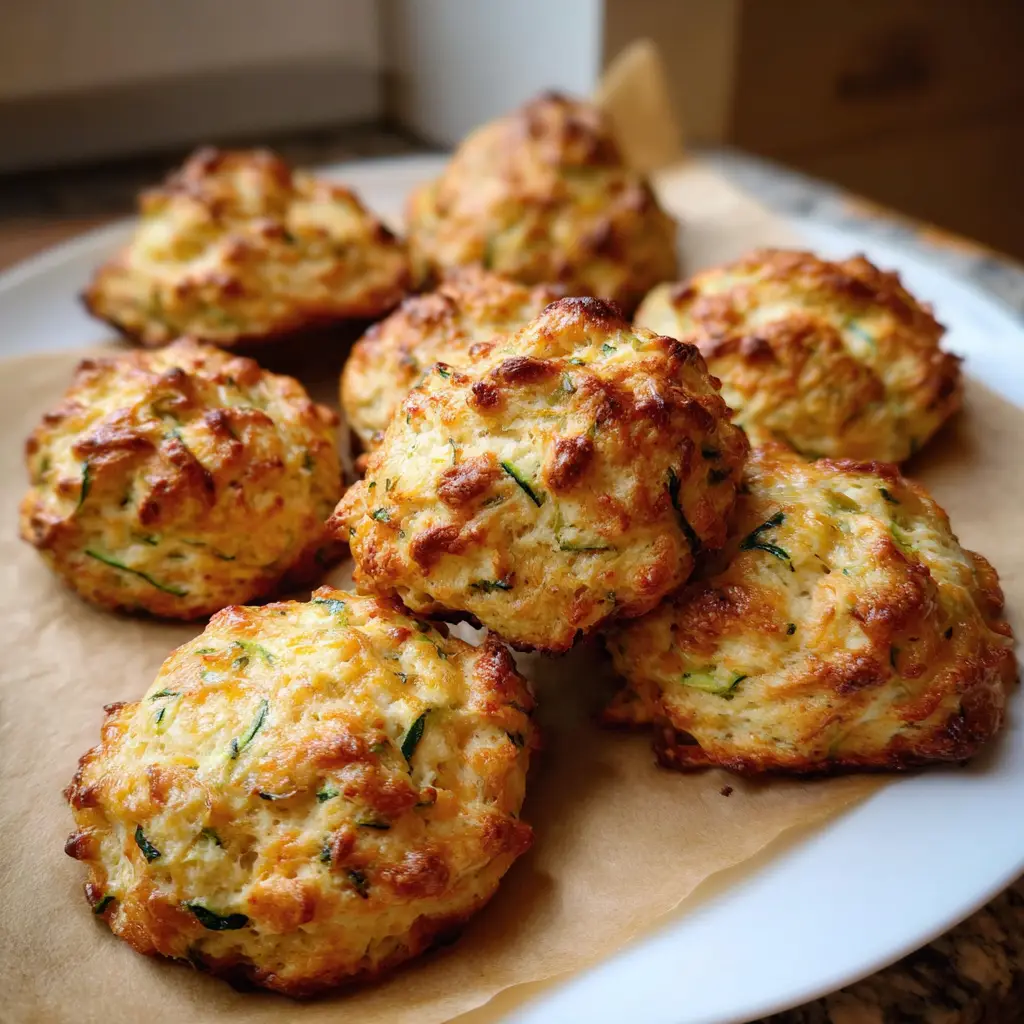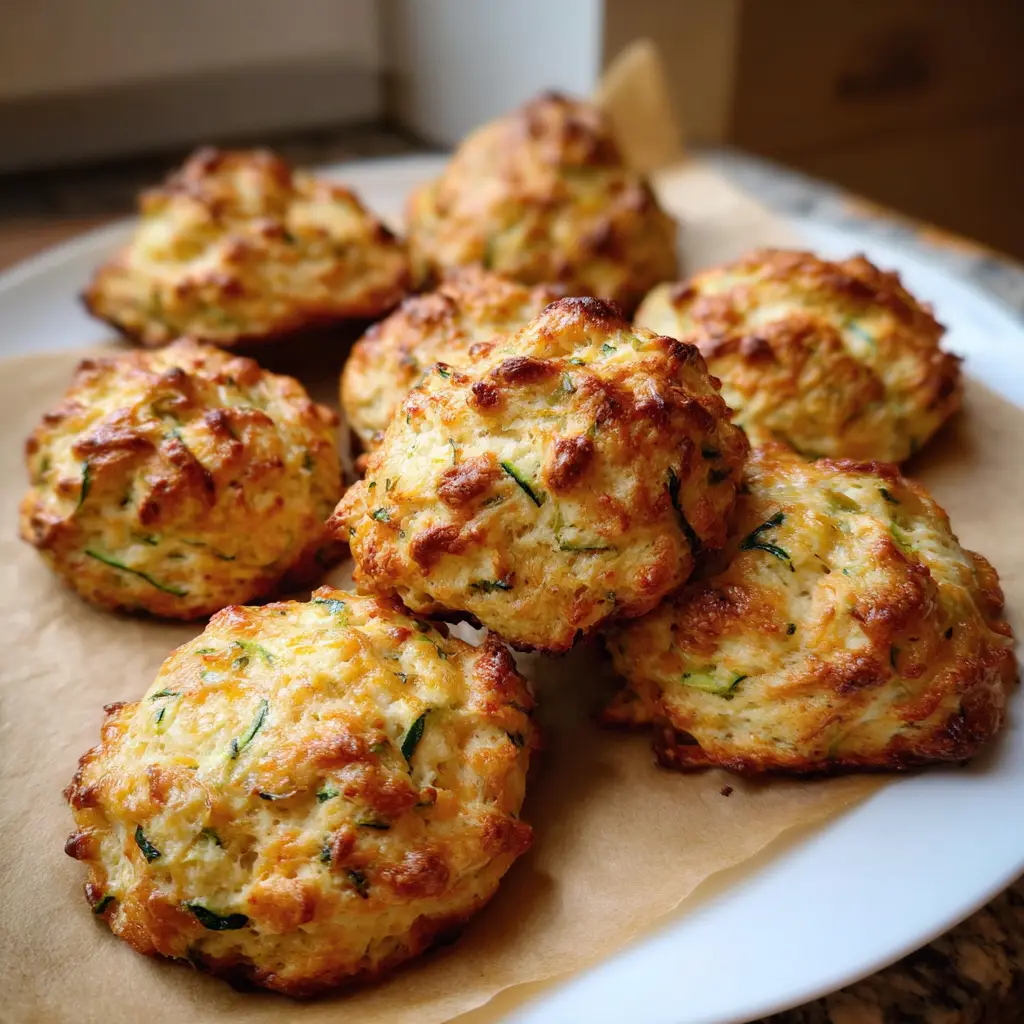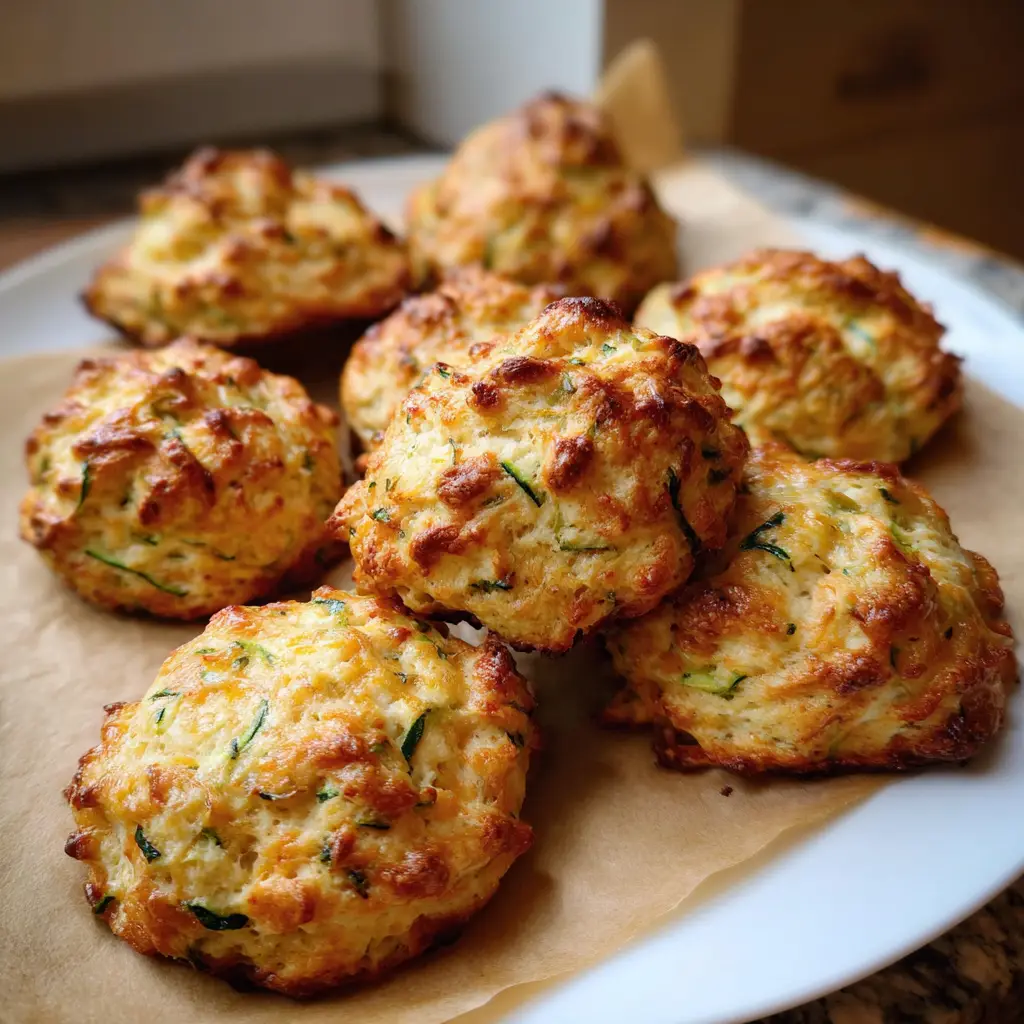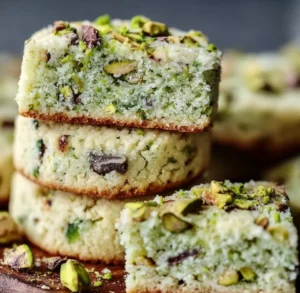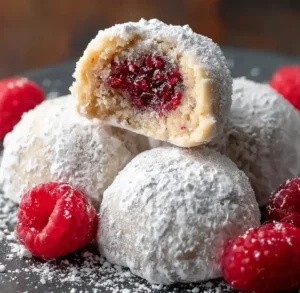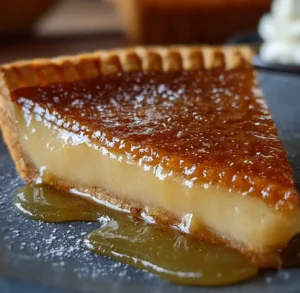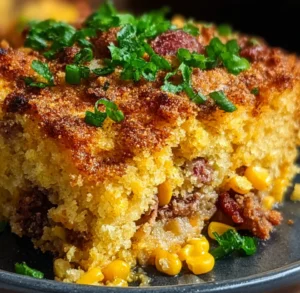| Prep Time | Cook Time | Total Time | Serves |
|---|---|---|---|
| 15 minutes | 15 minutes | 30 minutes | 12 |
Why This Zucchini Cheddar Drop Biscuits Recipe Works
The magic of these zucchini cheddar drop biscuits stems from the brilliant combination of ingredients that work together to create optimal texture and flavor because each component serves multiple purposes while contributing to the overall harmony that makes these biscuits so addictive and memorable. Fresh zucchini provides natural moisture and subtle sweetness because its high water content creates steam during baking that produces incredibly tender crumb while adding nutritional value and a beautiful green color that makes these biscuits visually appealing.
Sharp cheddar cheese delivers bold flavor and rich mouthfeel because its aged character cuts through the mildness of zucchini while providing protein and calcium that makes these biscuits more satisfying and nutritionally complete. The drop method eliminates the fussy techniques required for traditional rolled biscuits because this approach relies on the natural leavening power of baking powder and buttermilk to create height and fluffiness without requiring precise folding or cutting techniques.
Buttermilk serves as both liquid and leavening agent because its acidity reacts with baking soda to create carbon dioxide bubbles that make the biscuits light and airy while adding tangy flavor that complements both cheese and vegetables perfectly. The combination of butter and buttermilk creates ideal fat distribution because this pairing produces tender crumb while maintaining enough structure to support the added vegetables and cheese without becoming heavy or dense.
Temperature control throughout the process ensures optimal results because properly heated ovens create immediate steam that lifts the biscuits while cold butter creates flaky layers that give these drop biscuits the satisfying texture that makes them irresistible. This recipe produces biscuits with golden exteriors and tender interiors because the balance of moisture from zucchini and richness from cheese creates the perfect environment for achieving bakery-quality results in home kitchens.
Essential Ingredients for Perfect Zucchini Cheddar Drop Biscuits
For the Biscuits:
- 2 cups all-purpose flour
- 1 tablespoon baking powder
- 1 teaspoon salt
- 1/2 teaspoon black pepper
- 1/2 teaspoon garlic powder
- 6 tablespoons cold unsalted butter
- 1 cup sharp cheddar cheese, freshly grated
- 1 cup zucchini, finely shredded and drained
- 3/4 cup cold buttermilk
- 2 tablespoons fresh chives, chopped (optional)
For the Topping:
- 2 tablespoons melted butter
- 1/4 teaspoon garlic powder
- 1 tablespoon fresh parsley, chopped
Creating exceptional zucchini cheddar drop biscuits requires selecting premium ingredients because the simplicity of this recipe means that each component must deliver optimal flavor and performance to achieve the tender, flavorful results that make these biscuits so special. All-purpose flour provides the structural foundation because its moderate protein content creates enough gluten development for proper rise while remaining tender enough to produce the soft crumb that distinguishes good biscuits from ordinary quick breads.
Sharp cheddar cheese delivers the bold flavor that makes these biscuits memorable because aged cheese has concentrated taste that stands up to the other ingredients while providing rich mouthfeel and appealing color contrast against the green flecks of zucchini. Fresh zucchini contributes moisture, nutrition, and subtle sweetness because young, tender squash has the best texture and flavor while older zucchini can become watery or bitter and negatively impact the final results.
Cold buttermilk serves multiple essential functions because its acidity activates the leavening agents while adding tangy flavor that balances the richness of cheese and butter, so never substitute regular milk as it lacks the chemical properties necessary for proper rise and flavor development. Cold butter creates the flaky texture that distinguishes quality biscuits because small pieces of solid fat create steam pockets during baking that result in layers and tenderness.
The Art of Creating Perfect Zucchini Cheddar Drop Biscuits
Mastering zucchini cheddar drop biscuits requires understanding how moisture management affects final texture because zucchini contains significant water content that can make biscuits soggy if not properly handled during preparation. The shredding and draining process forms the foundation of successful biscuits because properly prepared zucchini adds flavor and nutrition without compromising the tender, fluffy texture that makes these biscuits so appealing.
Temperature management throughout preparation ensures optimal results because cold ingredients create the steam necessary for rise while preventing butter from melting prematurely and creating dense, heavy biscuits. The mixing technique requires restraint because overworking the dough develops too much gluten and results in tough, chewy biscuits rather than the tender, cake-like texture that characterizes properly made drop biscuits.
Timing plays a crucial role in achieving perfect results because baking soda and baking powder begin working immediately upon contact with liquid, so extended delays between mixing and baking can result in reduced rise and less fluffy final texture. The dropping technique affects both appearance and texture because consistent sizing ensures even baking while proper spacing prevents biscuits from merging together during the rising and browning process.
Oven placement influences browning and cooking patterns because center rack position provides optimal heat circulation while preheating ensures immediate temperature shock that creates the steam necessary for proper rise and golden crust development.
Step-by-Step Instructions for Zucchini Cheddar Drop Biscuits
Preparing the Zucchini
Begin by washing one medium zucchini thoroughly under cool running water because this removes any surface dirt or residue that could affect the flavor of your finished biscuits. Using a box grater or food processor fitted with a shredding disc, shred the zucchini into fine pieces because smaller shreds distribute more evenly throughout the batter while releasing appropriate amounts of moisture during baking.
Place the shredded zucchini in a clean kitchen towel or several layers of paper towels because this allows you to extract excess moisture that could otherwise make your biscuits soggy and dense. Sprinkle the zucchini with half a teaspoon of salt and toss gently because salt draws out moisture through osmosis, making the draining process more effective and thorough.
Professional Tip: Allow the salted zucchini to sit for ten minutes before squeezing because this resting period gives the salt time to draw out maximum moisture, resulting in better texture in your finished biscuits.
Key Points: Proper moisture removal is essential because excess liquid will interfere with the chemical reactions that create rise and can result in dense, heavy biscuits that lack the light, fluffy texture you want to achieve.
Creating the Dry Ingredient Base
Preheat your oven to 425 degrees Fahrenheit because this high temperature creates the immediate heat shock necessary for proper rise and golden browning of your drop biscuits. In a large mixing bowl, whisk together flour, baking powder, salt, black pepper, and garlic powder because thorough distribution of leavening agents ensures even rise throughout each biscuit.
Cut cold butter into small cubes because smaller pieces incorporate more easily into the flour mixture while maintaining the cold temperature that creates steam pockets during baking. Using a pastry cutter or two knives, cut the butter into the flour mixture until it resembles coarse cornmeal with some pea-sized pieces remaining because this texture creates the flaky layers that distinguish quality biscuits.
Professional Tip: Keep butter as cold as possible throughout the cutting process because warm butter will blend too thoroughly with flour and eliminate the fat pockets that create tender, flaky texture in the finished biscuits.
Key Points: Proper butter incorporation creates texture because small pieces of fat melt during baking and create steam pockets that produce the light, layered structure characteristic of excellent biscuits.
Incorporating Wet Ingredients
Squeeze the drained zucchini firmly in the towel to remove as much liquid as possible because excess moisture will interfere with proper dough consistency and final texture. Add the squeezed zucchini and grated cheddar cheese to the flour mixture because combining these ingredients before adding liquid ensures even distribution throughout the batter.
Pour cold buttermilk into the flour mixture all at once because gradual addition can lead to overmixing as you work to incorporate all the liquid evenly. Using a fork or large spoon, stir the mixture just until ingredients are combined and no dry flour remains visible because overmixing develops gluten and creates tough, dense biscuits.
Professional Tip: The dough should look shaggy and slightly rough because smooth, well-mixed dough indicates overmixing that will result in tough biscuits rather than tender, fluffy ones.
Key Points: Minimal mixing preserves tender texture because gluten development from overworking creates chewy rather than tender crumb structure in the finished biscuits.
Shaping and Baking
Line a large baking sheet with parchment paper because this prevents sticking while promoting even browning and easy removal of finished biscuits. Using a large cookie scoop or ice cream scoop, portion the dough into twelve roughly equal mounds because consistent sizing ensures even baking and professional appearance.
Space the dough mounds approximately two inches apart because biscuits will spread slightly during baking and need room to develop proper shape without touching. Place the baking sheet in the preheated oven and bake for 12 to 15 minutes because this timing allows for proper rise and golden browning without overbaking.
Professional Tip: Look for golden brown tops and firm sides because these visual cues indicate proper doneness, while pale biscuits need additional baking time to develop full flavor and texture.
Key Points: Avoid opening the oven door during the first ten minutes of baking because temperature fluctuations can interfere with rise and result in dense, flat biscuits.
Finishing Touches
While biscuits bake, melt two tablespoons of butter and stir in garlic powder and chopped parsley because this herb butter adds extra flavor and appealing shine to the finished biscuits. Remove biscuits from oven when golden brown and brush immediately with herb butter because warm biscuits absorb flavors better than cooled ones.
Allow biscuits to cool on the baking sheet for five minutes before serving because this brief resting period allows the interior to finish cooking while preventing burns from hot cheese or steam.
Professional Tip: Serve biscuits warm for best texture and flavor because the butter and cheese are at optimal consistency when the biscuits are fresh from the oven.
Key Points: Immediate brushing with herb butter enhances both flavor and appearance because the warm surface allows better absorption while creating appetizing shine and aroma.
Professional Tips for Perfect Zucchini Cheddar Drop Biscuits
Ingredient temperature control makes the difference between good and exceptional biscuits because cold dairy products and butter create the temperature differential necessary for optimal rise and flaky texture. Keep buttermilk refrigerated until the moment of use because warm liquid dissolves butter too quickly and eliminates the fat distribution that creates tender layers.
Cheese selection significantly impacts final flavor because pre-shredded cheese contains anti-caking agents that can affect melting and texture, so always grate your own cheese from a block for superior taste and melting characteristics. Choose sharp or extra-sharp cheddar because mild cheese lacks the flavor intensity needed to balance the vegetables and create memorable taste.
Zucchini preparation requires attention to detail because different varieties contain varying amounts of moisture that can affect final texture. Young, small zucchini generally have less water content and better flavor because mature zucchini can be watery and bitter, requiring more extensive draining to achieve proper consistency.
Oven rack positioning affects browning patterns because center rack placement provides optimal heat circulation while bottom rack can cause over-browning before interiors cook completely. Use an oven thermometer to verify accurate temperature because many home ovens run hot or cold, affecting rise and browning timing.
Timing from mixing to oven is crucial because leavening agents begin working immediately upon contact with liquid, so prolonged delays can result in reduced rise and dense texture. Have your oven preheated and baking sheet prepared before beginning the mixing process because efficiency preserves maximum leavening power.
Creative Variations of Zucchini Cheddar Drop Biscuits
Transform your basic zucchini cheddar drop biscuits into exciting new variations by incorporating different ingredients that complement the fundamental flavors while creating unique taste profiles for various occasions and preferences. Herb-enhanced zucchini cheddar drop biscuits elevate the basic recipe because adding fresh or dried herbs like thyme, oregano, or rosemary creates complex aromatic profiles that make these biscuits suitable for elegant dinners or special occasions.
Spicy jalapeño zucchini cheddar drop biscuits add heat and excitement because diced jalapeños provide bursts of spicy flavor that complement both cheese and vegetables while creating interesting textural contrast. Remove seeds for milder heat because the pepper flesh provides flavor without overwhelming spiciness that might not appeal to all family members.
Bacon zucchini cheddar drop biscuits incorporate smoky meat flavors because crispy bacon bits add richness and savory depth that transforms these biscuits into hearty breakfast or brunch offerings. Cook bacon until very crispy because softer pieces can release grease during baking and affect texture while properly cooked bacon maintains its crunch and flavor throughout the baking process.
Multi-cheese zucchini drop biscuits create complex flavor profiles because combining different cheese varieties like Gruyere, Parmesan, or pepper jack provides layers of taste that evolve as you eat. Balance strong cheeses with milder ones because overwhelming cheese flavor can mask the delicate zucchini character that makes these biscuits special.
Sweet corn zucchini cheddar drop biscuits add seasonal appeal because fresh or frozen corn kernels provide sweetness and textural interest that complements both vegetables and cheese while creating colorful visual appeal. Drain frozen corn thoroughly because excess moisture can affect baking results just like improperly drained zucchini.
Mediterranean zucchini drop biscuits incorporate sun-dried tomatoes, fresh basil, and feta cheese because these ingredients create sophisticated flavor combinations that transform simple biscuits into elegant accompaniments for upscale meals or entertaining occasions.
Perfect Pairing Ideas for Zucchini Cheddar Drop Biscuits
The versatile flavor profile of zucchini cheddar drop biscuits makes them ideal companions for a wide range of dishes because their savory character and tender texture complement both hearty main courses and light seasonal fare while their vegetable content adds nutritional value to any meal. These biscuits pair beautifully with soups and stews because their substantial texture holds up well to dipping while their cheese content provides richness that balances acidic tomato-based broths or cream-based preparations.
Breakfast and brunch menus benefit enormously from these biscuits because their savory character works perfectly with eggs, bacon, and other morning favorites while providing a sophisticated alternative to ordinary bread or toast. Split warm biscuits and top with scrambled eggs and fresh herbs because this combination creates satisfying breakfast sandwiches that showcase the biscuits’ flavor while providing complete, balanced nutrition.
For those interested in creating comprehensive breakfast spreads, the diverse collection at Solush Recipes offers numerous dishes that would complement these biscuits perfectly while creating cohesive morning meals that satisfy various taste preferences and dietary needs.
Grilled meats and barbecue dishes create excellent pairings because the biscuits’ mild flavor doesn’t compete with bold seasonings while their tender texture provides pleasant contrast to crispy or charred exteriors. Serve alongside grilled chicken, pork chops, or barbecue ribs because the cheese content helps balance spicy or tangy sauces while the vegetables add freshness that cuts through rich, fatty meats.
Salad courses benefit from these biscuits as accompaniments because their substantial nature makes light meals more satisfying while their vegetable content bridges the gap between bread and salad components. For those looking to explore creative salad combinations that would pair beautifully with these biscuits, the inspiring options at Tasty Middles provide numerous ideas for creating balanced, nutritious meals.
Holiday meals and special occasions showcase these biscuits perfectly because their elegant appearance and sophisticated flavor make them suitable for formal dining while their familiar comfort-food character ensures broad appeal among guests of all ages and food preferences.
Discover More Savory Baking and Comfort Food Inspirations
Expanding your repertoire of savory baked goods opens up exciting possibilities for creating memorable meals because understanding the principles that make zucchini cheddar drop biscuits successful allows you to apply similar techniques to other vegetable and cheese combinations while developing your skills in quick bread preparation. The drop biscuit method works beautifully with many different vegetables because the technique accommodates ingredients with varying moisture contents and textures.
Seasonal vegetable rotations keep your baking interesting because different times of year offer unique ingredients that can transform basic biscuit recipes into exciting new creations. Summer might emphasize fresh corn, tomatoes, and herbs because these ingredients capture the essence of warm weather while autumn could focus on winter squash, caramelized onions, and warming spices because these flavors provide comfort appropriate for cooler temperatures.
The art of incorporating vegetables into baked goods extends beyond biscuits because understanding moisture management and flavor balancing allows you to create successful quick breads, muffins, and scones that showcase seasonal produce while providing satisfying, nutritious alternatives to purely grain-based baked goods.
For those interested in exploring more sophisticated savory sides that complement these biscuits, the expertly crafted collection at Solush Recipes demonstrates how vegetables and grains can be combined in innovative ways that create restaurant-quality side dishes perfect for entertaining or elevating everyday meals.
Cheese and herb combinations offer endless possibilities for customization because different varieties bring unique characteristics that can completely transform the flavor profile of basic recipes. Understanding which cheeses melt well and which provide optimal flavor intensity allows you to create signature versions that reflect personal preferences or complement specific main dishes.
Regional flavor profiles inspire creative variations because incorporating ingredients from different culinary traditions can transform familiar recipes into exciting new experiences. Mexican-inspired versions might include jalapeños, cilantro, and pepper jack cheese because these ingredients create bold, vibrant flavors, while Italian variations could emphasize basil, Parmesan, and sun-dried tomatoes because these components provide sophisticated Mediterranean character.
The technique of savory quick breads provides foundation for countless variations because mastering basic principles of leavening, fat distribution, and moisture management gives you the confidence to experiment with different ingredient combinations while maintaining the structural integrity that produces consistently excellent results.
Proper Storage Guidelines for Zucchini Cheddar Drop Biscuits
Understanding proper storage techniques ensures that your zucchini cheddar drop biscuits maintain optimal texture and flavor because improper handling can quickly degrade the tender crumb and fresh taste that make these biscuits so appealing when first baked. Fresh biscuits should be cooled completely before storage because trapped steam can create soggy bottoms and compromise the crispy exterior that provides textural contrast.
Room temperature storage works best for biscuits that will be consumed within two days because airtight containers prevent moisture loss while maintaining the tender interior texture that makes these biscuits so enjoyable. Place biscuits in single layers when possible because stacking can compress delicate crumb structure and create dense, heavy texture that diminishes eating quality.
Refrigerator storage extends freshness for up to one week because cold temperatures slow staling and prevent spoilage, but wrap biscuits individually or place parchment paper between layers because direct contact can cause sticking and damage to surfaces. Bring refrigerated biscuits to room temperature before serving because cold biscuits have firmer texture and muted flavors compared to properly warmed ones.
Freezing provides long-term storage options because properly wrapped biscuits maintain quality for up to three months, making this an excellent method for preserving large batches or preparing ahead for special occasions. Wrap individual biscuits tightly in plastic wrap before placing in freezer bags because this double protection prevents freezer burn while maintaining moisture content.
Reheating techniques significantly impact final quality because different methods produce varying results in texture and flavor restoration. Oven reheating at 350 degrees for five to seven minutes restores crispness to exteriors while warming centers thoroughly because dry heat revives the original texture better than microwave heating that can create tough, rubbery results.
Microwave reheating should be used sparingly because electromagnetic heating can toughen gluten and create unpleasant texture, but brief heating periods of 15 to 20 seconds can warm biscuits without significant quality degradation if oven reheating isn’t convenient.
The Science Behind Zucchini Cheddar Drop Biscuits’ Success
The remarkable texture and flavor of zucchini cheddar drop biscuits result from complex chemical and physical reactions that occur during mixing and baking because understanding these processes helps explain why specific techniques and ingredient ratios produce consistently excellent results. Leavening agents create rise through acid-base reactions because baking powder contains both acid and alkaline components that react when moistened, producing carbon dioxide gas that creates the light, airy texture characteristic of quality biscuits.
Buttermilk’s acidity serves multiple functions because it activates baking soda while tenderizing gluten proteins that could otherwise create tough, chewy texture instead of the desired tender crumb. The combination of mechanical and chemical leavening works synergistically because trapped air from mixing combines with chemically produced gas to create optimal rise and texture.
Fat distribution affects both flavor and texture because butter creates steam pockets when cold pieces melt during baking, while also coating gluten strands to prevent over-development that would result in tough, dense biscuits. The temperature differential between cold ingredients and hot oven creates immediate steam production because this rapid moisture vaporization provides the lift necessary for proper rise.
Zucchini’s cellular structure contributes moisture through controlled release because properly prepared vegetables provide steam during baking while excess water has been removed to prevent soggy texture. The natural sugars in zucchini undergo Maillard reactions during baking because these browning processes create complex flavors that enhance the overall taste profile.
Cheese proteins denature and fat melts during baking because these changes create rich mouthfeel while adding moisture that keeps biscuits tender throughout the cooking process. The combination of different proteins from flour, dairy, and cheese creates a complex matrix because these interactions determine final texture and structural integrity.
Gluten development must be carefully controlled because insufficient mixing results in crumbly texture while excessive mixing creates tough, chewy biscuits instead of the tender, cake-like crumb that characterizes properly made drop biscuits.
Troubleshooting Common Zucchini Cheddar Drop Biscuits Issues
Creating perfect zucchini cheddar drop biscuits requires understanding common problems and their solutions because even experienced bakers encounter challenges that can affect both texture and flavor of these otherwise straightforward baked goods. Dense, heavy biscuits typically result from overmixing or using warm ingredients because both factors interfere with proper fat distribution and leavening action that creates light, fluffy texture.
If your biscuits are too dense, reduce mixing time and ensure all ingredients are properly chilled because temperature control and gentle handling preserve the conditions necessary for optimal rise and tender crumb. Soggy or gummy texture usually indicates inadequate zucchini draining because excess moisture interferes with proper dough consistency and creates steam that makes biscuits heavy rather than light.
Improve zucchini preparation by extending draining time and squeezing more thoroughly because removing maximum moisture prevents textural problems while preserving the vegetable’s flavor contribution. Flat biscuits that don’t rise properly often result from expired leavening agents or delayed baking because both baking powder and baking soda lose potency over time while extended delays allow gas production to dissipate.
Test leavening agents regularly by mixing small amounts with hot water because active ingredients should foam vigorously while inactive products show little or no reaction. Uneven browning can occur from improper oven temperature or rack placement because hot spots and inadequate circulation create irregular cooking patterns that affect both appearance and texture.
Use an oven thermometer to verify accurate temperature because many home ovens vary significantly from displayed settings, while center rack placement provides optimal heat distribution for even browning and cooking. Crumbly texture that falls apart easily indicates insufficient moisture or fat because these binding agents are essential for creating cohesive structure that holds together during and after baking.
Check ingredient measurements carefully because small variations in liquid or fat content can significantly impact final texture, while ensuring proper ingredient incorporation helps distribute binding agents evenly throughout the dough.
Bland flavor often results from insufficient salt or aged cheese because these ingredients provide the taste intensity necessary to balance mild zucchini while creating the savory character that makes these biscuits appealing as side dishes or snacks.
Additional Inspirations for Savory Baking and Vegetable Integration
The principles that make zucchini cheddar drop biscuits so successful can inspire broader exploration of vegetable-enriched baked goods because understanding how to balance moisture, flavor, and texture allows you to create personalized recipes that showcase seasonal produce while satisfying comfort food cravings. Traditional quick bread techniques provide excellent frameworks for experimentation because established ratios and methods can be adapted with different vegetables while maintaining structural integrity.
Seasonal ingredient rotation keeps your baking repertoire fresh and exciting because different times of year offer unique opportunities to showcase peak flavors while creating dishes that complement changing weather and eating patterns. Spring vegetables like asparagus, peas, and fresh herbs create delicate flavors because these ingredients capture the essence of renewal and growth, while autumn produce like butternut squash, caramelized onions, and warming spices provide comfort and richness appropriate for cooler temperatures.
The art of flavor layering extends beyond individual recipes because understanding which ingredients complement each other allows you to create cohesive menus that flow logically throughout meals or special events. Consider how savory baked goods should enhance rather than compete with main dishes because this approach creates harmonious dining experiences that showcase your cooking skills.
For those interested in exploring more sophisticated flavor combinations and advanced preparation techniques, the collection of expertly crafted recipes at Solush Recipes demonstrates how traditional ingredients can be combined in innovative ways that create complex flavors while maintaining accessibility for home cooks.
International flavor profiles inspire creative adaptations because incorporating ingredients from different culinary traditions can transform familiar techniques into exciting new experiences. Mediterranean variations might emphasize olive oil, herbs, and aged cheeses because these ingredients create sophisticated flavor profiles, while Mexican-inspired versions could feature jalapeños, cilantro, and pepper jack cheese because these components provide bold, vibrant character.
The psychology of comfort food plays important roles in recipe development because understanding what makes foods satisfying and memorable allows you to create dishes that provide emotional as well as physical nourishment. Texture, aroma, and visual appeal all contribute to overall satisfaction because these sensory elements work together to create positive associations that make recipes worth repeating.
For those looking to expand their entertaining options with complementary dishes, the appetizer collection at Tasty Middles offers numerous recipes that would pair beautifully with these biscuits while creating sophisticated spreads perfect for gatherings or special occasions.
Conclusion
This comprehensive exploration of zucchini cheddar drop biscuits demonstrates how thoughtful ingredient selection and proper technique can transform simple components into exceptional baked goods that enhance any meal because the combination of fresh vegetables, quality cheese, and traditional baking methods creates comfort food that satisfies both taste and nutritional needs. The beauty of this recipe lies not only in its delicious results but also in its flexibility because you can easily adapt ratios, substitute ingredients, or add creative elements while maintaining the fundamental balance that produces consistently excellent biscuits.
Understanding the science behind successful biscuit making empowers you to troubleshoot problems and customize recipes because knowledge of how different components interact allows you to achieve your desired texture and flavor while building confidence in your baking abilities. The techniques demonstrated in this recipe apply to countless other quick bread variations because mastering moisture management, proper mixing, and temperature control provides the foundation for successful baking across many different styles and ingredients.
Regular practice with these zucchini cheddar drop biscuits will develop your intuition and technical skills because repeated preparation builds understanding of proper dough consistency, optimal baking timing, and ideal serving conditions that distinguish exceptional home baking from ordinary results. The investment in quality ingredients and proper equipment pays dividends in improved outcomes because premium components and appropriate tools make the difference between amateur and professional-quality baked goods.
Whether you’re seeking a clever way to use abundant garden produce, wanting to add nutritious vegetables to family meals, or simply craving the comfort of fresh-baked biscuits, this recipe provides the perfect solution because it combines wholesome ingredients with satisfying flavors and textures that appeal to all ages and dietary preferences. The skills and knowledge gained from mastering these biscuits will serve as stepping stones to more advanced baking projects because understanding fundamental principles creates the foundation for lifelong exploration and enjoyment of homemade baked goods that bring families together around the table.

